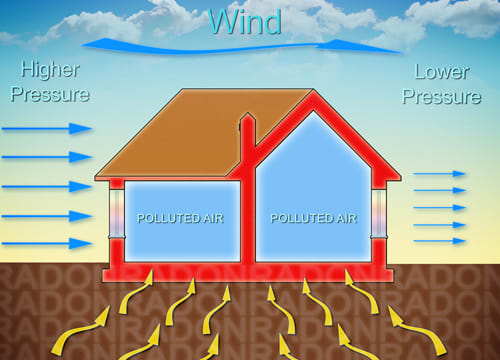Radon Exposure Linked to Lung Cancer
Radon exposure is the second leading cause of lung cancer and the No. 1 cause of lung cancer in nonsmokers. While exposure to radon is common, the U.S. Environmental Protection Agency indicates that Middlesex County is at increased risk for exposure to harmful levels of radon.
These startling statistics make radon exposure a lung cancer risk factor worth talking more about.
Radon is a radioactive gas that forms naturally when radioactive elements found in soil and rock break down. It is colorless, odorless and tasteless and can move into the air and into underground and surface water. Most of our exposure to radon happens when we are indoors – in our homes, offices or schools, and this is why we need to be so careful. In fact, it is estimated that 1 in 5 homes in the United States have harmful radon levels.

When you breathe radon into the lungs, it gives off radiation that can damage DNA. Jessica Poetzsch, Middlesex Hospital Cancer Center’s lung nurse navigator, says that radon is harmless in small doses. However, exposure to radon over a long period of time, or in a large dose, can lead to lung cancer. Poetzsch also says that your chances of developing lung cancer increase greatly if you are a smoker who is exposed to a harmful amount of radon.
An estimated 20,000 lung cancer deaths each year are related to radon.
While very low levels of radon can be found in most air samples, radon levels in homes and buildings depend on the characteristics of the rock and soil in the area. Radon levels are usually highest in basements because that is the space closest to the source of radon.
What can you do to minimize your exposure?
Exposure to radon is impossible to avoid completely, but you can try to lower your exposure by:
Checking the radon levels in your home. Radon detection kits are easy to use and inexpensive, and they can be bought at local home improvement stores or online. There are short- or long-term kits available. Long-term tests are the best indicator of the average radon level in a specific location. Testing is best done during the colder months when radon levels are at their highest.
Taking action if the radon level in your home is 4.0 picocuries per liter or higher. To help reduce radon levels, you can seal cracks in your floor and walls or increase ventilation using pipes and fans. You may also need a radon mitigation system. The U.S. Environmental Protection Agency recommends hiring a qualified contractor who has the knowledge and skills needed to lower radon levels.

What can you do if you’ve been exposed?
If you think that you’ve been exposed to harmful levels of radon, or radon over a long period of time, talk to your primary care provider. Also, know the symptoms of lung cancer, including shortness of breath; a new or worsening cough; pain or tightness in the chest; hoarseness and trouble swallowing. It is always best to find lung cancer in its early stages, Poetzsch says.
For more information, visit www.middlesexhospital.org, call 860-358-2066 or email totallungcarecenter@midhosp.org.
More Stories
Tips From The Mayer Center
In recognition of Autism Acceptance Month, Middlesex Health's The Mayer Center shares tips for parents of children who may be on the autism spectrum.
The Benefits of Acupuncture
Acupuncture, a form of integrative medicine, can ease pain and help with stress management. Acupuncture can also help if you are dealing with long COVID!